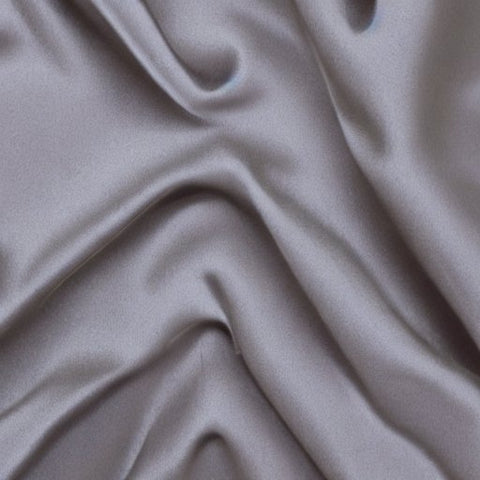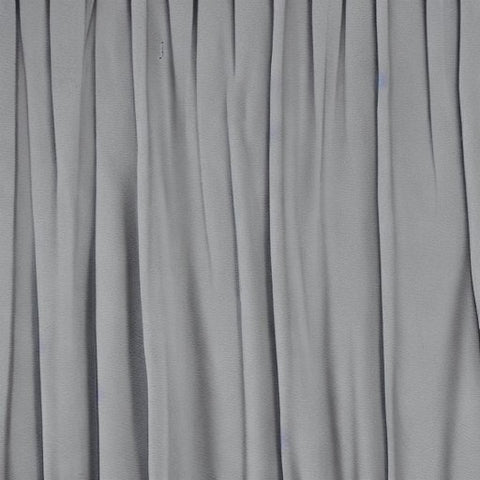What exactly is polyester?
Polyester is a man-made synthetic fabric that is often obtained from petroleum. Polyester may also be found in nature. It is one of the most widely used fabrics in the world, despite having a number of adverse effects on the surrounding environment.
In order to make polyester, ethylene and p-xylene must first be collected from fossil fuels before being converted into polyethylene terephthalate (PET), which is a process that requires a significant amount of energy. The garbage that is produced as a consequence is harmful to living creatures not just on land but also in water.
Some of the uses of polyester:
- Polyester is a type of man-made cloth that is well-known for its flexibility, resilience to wrinkling, and long-lasting qualities. It is frequently used in a broad variety of apparel, domestic products, and commercial uses.
- Typically, polyester is used in the production of clothing because of its low weight, high breathability, and low maintenance requirements. It is incorporated into the production of a wide range of clothes, including coats, sports wear, skirts, shirts, and jackets, among others.
- In addition, polyester is frequently utilized in the production of clothing and other types of domestic textiles, such as blankets, pillows, and drapes. Fabrics that are smooth and pleasant to the touch are frequently produced by combining this fiber with others, such as cotton or rayon, in order to achieve the desired effect.
- Polyester is utilized in commercial uses due to its high resilience as well as its durability to both dampness and toxins. It is utilized in the production of cables, tire chains, conveyor belts, and other products that require high levels of durability.
- In addition to its use in the manufacturing of automobile components, consumer electronics, and medical tools and supplies, polyester is also a component in the production of packaging materials like film and food containers.
- Polyester is a popular choice for a broad range of uses due to its cheap cost and extensive availability, making it a popular choice for everything from daily apparel to industrial production.
Production
Polyester, a synthetic fiber, has emerged as one of the most widely used textiles in the world and was the most widely used fiber all over the globe in the year 2002. It is also a material that is resistant to wear and tear, is simple to color, and may either be woven or knitted.
Extraction of crude oil, a nonrenewable fossil fuel that is made up of hundreds of distinct organic compounds, is the first step in the manufacture of polyester. Polyester is a man-made fiber. This procedure may have negative effects on the surrounding ecosystem and uses a substantial amount of energy.
After the raw components have been obtained, the final polyester is manufactured by the use of a chemical process. The end result is a thermoplastic polymer that may be recycled into brand new items.
Even though a good many of these compounds are derived from petroleum, more and more people are turning to other sources of polyester. These include waste products from agricultural crops and plant-based oils, both of which are examples of renewable feedstocks.
The production of polyester typically involves a mixture of two processes, namely batch polymerization and continuous extrusion. These processes may be combined in order to manufacture a diverse selection of polyester fibers, ranging from very fine filaments to enormous cylinders.

In order to stop the hydrolysis process from occurring, the granules of the polymer are first dried in the batch process. After being melted, these granules are passed through a spinneret in order to be extruded. The resultant fibers are used to create yarn by being spun together.
Spinning the yarn includes a stretching process that stretches the polyester molecules, which then enables them to arrange themselves in parallel configuration. Its tensile strength and resilience both improve as a result of this stretching.
After being spun, yarns are either wrapped into bobbins or packaged in flat-wound forms in preparation for weaving into fabric. The finished cloth may be thick and textured, or it may be smooth and soft.
There are also forms of polyester that are biodegradable, making it possible to use them as an alternative to conventional materials that is better for the environment. Other varieties of polyester, such as the certified recycled Repreve fabric, are produced from recovered plastics that, under other circumstances, would be discarded.
The manufacturing of polyester is a massive business that spans the whole world. This comprises both big processing facilities that create staple fibers and yarns and smaller plants that transform the material into a variety of textiles. The large processing units produce staple fibers and yarns. These include polyester-cotton mixes, which have a look that is all their own and are very long-lasting.
Properties
Polyester is one of the polymers that is used the most often, primarily because it is a material that can be utilized in a wide variety of applications and is also relatively affordable. It is possible to mould it into a wide variety of different forms, and it is often used in the production of long-lasting textiles that are employed in home furnishings or in industrial applications.
Ethylene glycol and terephthalic acid are the two components that are generally combined to create polyester, a kind of synthetic polymer. It is an easy-to-work-with material that is sturdy, elastic, and lightweight, and it can be coloured to a wide range of colors.
The kind of polyester and the manufacturing process that it goes through both have a role in determining the characteristics of the finished product. Poly(ethylene terephthalate) (PET) and poly(butylene terephthalate) are the two forms of polyester that are most often encountered (PBT).
When it is molded or thermoformed, PET, which is a kind of polyester that is aliphatic-aromatic, has a structure that is semi-crystalline. It has high levels of strength and hardness, as well as great abrasion resistance and a high level of resistance to chemical attack. In addition to this, it has high dimensional stability, which is notably noticeable when it is reinforced with glass fibers.
PBT is an aliphatic-aromatic tetramer that has a structure that resembles a semi-crystalline structure when it is molded into form or subjected to a heat treatment that causes it to become crystalline. It is robust and has a high tensile strength, but its ability to stretch is limited. It provides enhanced durability, dimensional stability, and performance attributes in comparison to other reinforcing textiles like nylon, making it an excellent option for reinforcing materials.
In addition to this, it has a high level of elasticity and is not affected by the UV rays in any way. It is a common option for materials that go through a lot of washing, such as shirts, slacks, and bed linens, among other things.
Because it is robust, resists stains, and keeps its volume and form after being compressed, it is also used as batting in the production of cushions and upholstery. Because of its insulating properties, it is often used in camping equipment such as tents.
Because of polyester's capacity to withstand the penetration of liquid droplets, this material is well suited for use in the production of textiles that will be subjected to wet conditions such as rain. One of the reasons why polyester has been so widely used in clothing, particularly in athletic wear, is due to the fact that it has the capacity to wick away fluids.
It is possible to vary the physical qualities of polyester by adding different additives, however this depends on the kind of polyester being used. The chemical characteristics of the substance may be improved by certain additions, while others boost its resistance to oxidation and heat deterioration.
Applications
Polyester is a form of synthetic fiber that is often mixed with other types of fibers in order to create goods that have a wider range of applications. Due to the fact that it is tough and long-lasting, it is often used in the production of clothing. It is possible to create a broad variety of colors by dying it, and it is quite lightweight.
Additionally, it is used in the production of a wide range of homewares, such as beds and towels. Polyester is used for these uses by manufacturers because of the material's resilience to stains and its plush texture. Consumers place a high value on these traits because they assist in maintaining the cleanliness and hygiene of the consumers' houses.
In addition to being long-lasting and having a high tensile strength, fabric made of polyester is also very breathable and has outstanding qualities for repelling water. Because of this, it is an excellent choice for the construction of apparel and garments that are intended to be worn in demanding conditions, such as the great outdoors.
Because of these features, it is a common option for outerwear, particularly in the realm of athletics. It is also an excellent choice for rain gear since it is able to resist water and keep its color and form even when it is wet.

Polyester is a material that is durable and allows air to pass through it, yet wearing it may be unpleasant. Because of this, it is often combined with cotton or any other natural fiber in order to increase its comfort and decrease its tendency to wrinkle.
As a result of its ability to be pigmented to an extensive range of hues, it is also often employed in the production of covers for furniture. Additionally, it is lightweight and simple to clean, both of which are vital qualities for those who are the guardians of young children or animals.
Polyester is a material that is utilized as a reinforcing component in the production of tires. This is due to polyester's high tensile strength, as well as its longevity and resistance to wear. This contributes to the tires being more long-lasting and trustworthy, while also enhancing their ability to grip the road.
The production of polyester requires the use of fossil fuels, which may lead to the pollution of the surrounding environment. The process of refining petroleum to produce ethylene is one that not only consumes scarce resources but also has the potential to be harmful to living creatures both in the air and on the ground.
Sustainability
One of the most significant contributors to the phenomenon of climate change is the textile sector. Every day, thousands of tons of textiles and fibers are generated, which has a significant negative effect on the surrounding ecosystem. When polyester is manufactured, significant quantities of greenhouse gas emissions are released, and significant amounts of water are used for the cleaning and dyeing of the fabric. In addition, the manufacturing of polyester may result in the release of microfibers, which are a kind of pollution that can affect both the land and the air.
On the other hand, the use of recycled polyester is becoming an increasingly common practice, which is good for the environment. It has a lower energy usage than virgin PET does, and it also helps to lessen the effect of oil extraction from the soil, which is something that is quite destructive to the ecology.
Plastic trash, such as old bottles and food packaging, is often utilized by manufacturers for the production of recycled PET textiles. These materials are then shredded into smaller bits that may be repurposed for use in the garment industry. Many companies, such as H&M and Timberland, have pledged to employ recycled polyester in 25% of their apparel goods by the year 2020.
Even if it is a more eco-friendly alternative than using virgin polyester, using recycled polyester is still not the best solution for the earth. Nevertheless, it can be the only choice for some articles of clothing that need to be cleaned on a regular basis.
This is due to the fact that polyester is a fiber that is notoriously difficult to recycle and does not degrade under natural conditions. Polyester will not disintegrate in the environment for decades, according to environmental specialists, and it may be difficult to totally eradicate it from the ecosystems of the world.
In the end, the most effective strategy to protect oneself from the adverse effects of polyester is to avoid purchasing clothing made from the material. Instead, you should make an effort to get clothing that has a lengthy useful life and can be worn repeatedly without being worn out.
In the event that you are unable to steer clear of wearing polyester, you have the option of purchasing clothing manufactured from fabrics that are more environmentally friendly, such as organic cotton, linen, hemp, or Ecovero viscose. These materials are more ecologically friendly than polyester, and they can be recycled and used for a variety of different applications.
rayon is a kind of synthetic fiber that is manufactured by extracting the cellulose from beech trees. It is often considered to be an alternative to polyester. Although it is a substance with a low impact on the environment, finding it on the market might be challenging.


















































Hinterlassen Sie einen Kommentar